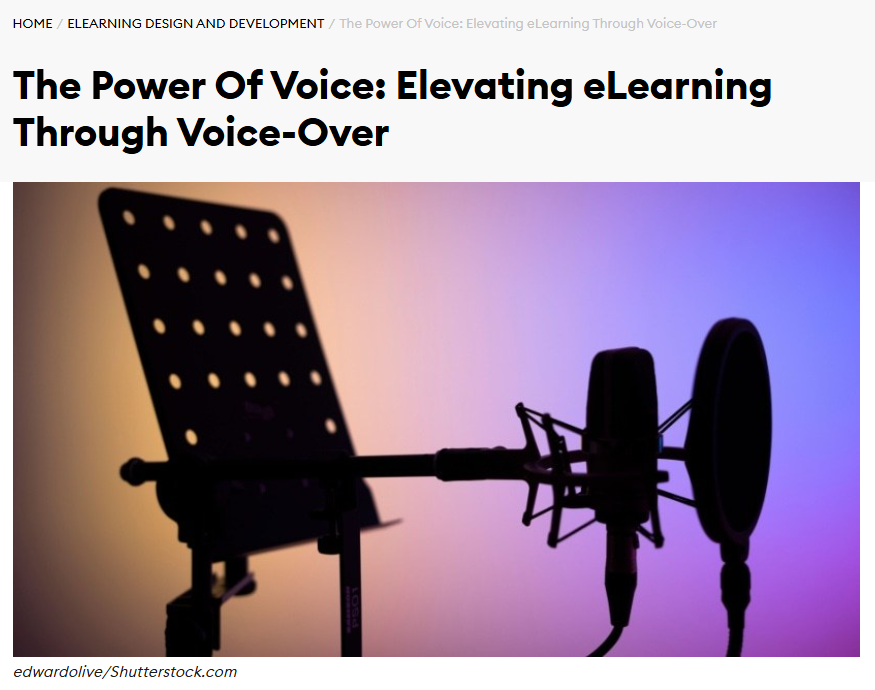In conversation, a fellow designer recently suggested that voice-over slows down eLearning and distracts from the content. While it’s true that some learners prefer to read quickly and skip ahead, this perspective risks ignoring a broader truth: not everyone learns the same way.
In fact, assuming that most learners read faster than narration is ambitious—and potentially exclusionary.
Why Voice-Over Matters:
- Cognitive Load Theory supports multimodal learning. When audio complements visuals, it reduces overload and improves retention.
- Accessibility is enhanced for learners with reading difficulties, visual impairments, or those learning in a second language.
- Engagement increases when narration adds tone, pacing, and human presence—especially in dry or compliance-heavy modules.
- Inclusivity means designing for all learners, not just the fastest readers.
As Brent Thomas writes in The Power of Voice:
“Voice-over adds a human dimension to digital learning. It guides learners through content, clarifies complex ideas, and creates a sense of presence that static text and visuals alone cannot achieve.”
Rather than seeing voice-over as a bottleneck, we should view it as a bridge, connecting learners to content in a way that’s empathetic, inclusive, and effective.
Read the Full Article Here:

